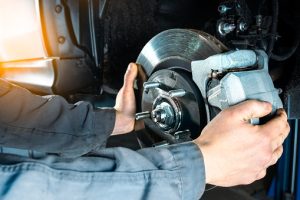Physical Address
304 North Cardinal St.
Dorchester Center, MA 02124
Physical Address
304 North Cardinal St.
Dorchester Center, MA 02124
The operation of regenerative braking systems
Electric vehicle behavior during the braking energy recovery phase for many years; this is the outcome of several test sessions that were analyzed using the ground-breaking Cloud system for electric vehicles.
There are various types of electric motors; electric vehicles use specialized, modern electric motors with a maximum capacity of 14 kW that, when operating normally, draw power from batteries. The same motor acts as a dynamo when the brakes are applied, producing energy that is delivered to the driving batteries rather of being lost as heat. Because of this, the electric car can achieve lower average consumption and, as a result, greater autonomy. Universities have conducted numerous research to determine the true value of this innovation, and it is predicted that you can save up to 30% at most as a result. This value is especially attained in stop-and-go work scenarios as those seen in rubbish collection, linen collection, park maintenance, where there are level inequalities present, and in urban settings where there are continuous parts and brakes.
Regenerative braking: What is it?
Regenerative braking refers to the braking technique where no energy is taken from the supply system during the braking phase and some of the energy (kinetic energy of spinning parts) is supplied back to the supply system.
The most effective way to stop a locomotive’s drive motor using electricity is through regenerative braking. Both AC and DC motors can be stopped by regenerative braking.
Regenerative braking benefits
The following are some of the benefits of regenerative braking:
The overall energy consumption for the run in electric traction is significantly decreased (by around 20 to 30%) in the event of regenerative braking because a portion of the electrical energy is returned to the supply system. Consequently, there was a sizable reduction in operational expenses.
The wear on the brake shoes and wheel tires is significantly decreased by using regenerative braking. As a result, their lifespan is extended and their replacement cost is reduced.
Regenerative braking allows for a larger value of braking retardation in electric traction, which allows for a quicker vehicle stop and a significantly shorter running time.
Only a tiny amount of brake dust is created when mechanical brakes are deployed, since braking force is obtained by regenerative braking.
Due to the considerable braking retardation that regenerative braking offers, trains can travel at high speeds while descending slopes or gradients.
If regenerative braking is offered, heavier trains can be propelled in upgrades without being divided into pieces, while still moving quickly and safely.

Drivers can modify how they operate a vehicle with regenerative braking by being aware of these limits. Knowledge is power in this situation as we try to navigate the ever-changing world of automobile efficiency.
As we have learned, regenerative braking systems assist drivers in saving money not just on energy costs, but also on the expense of changing brake pads. An EV’s brake pads will age more slowly because you won’t have to press down on them as frequently as you would with conventional braking systems.
Regenerative braking drawbacks
Regenerative braking in electric traction has the following drawbacks:
Additional equipment is needed for regeneration control and machine protection when regenerative braking is employed in electric traction. It raises the traction system’s startup and ongoing expenditures.
Regenerative braking causes the operation of the substations to become complex and challenging due to recovered energy.
When using regenerative braking, larger DC machines are used than are typically used. As a result, the locomotive becomes heavier, which raises its cost and mechanical strength requirements.
When substations use mercury arc rectifiers for conversion in regenerative braking situations, additional equipment is needed to either manage the regenerated energy independently or convert one or more of the conventional rectifiers to inverted operation. In substations that use rotary converters or motor-generator sets for conversion purposes, no such issue arises.
When regenerative braking is utilized in a traction system, multistage braking schemes must be provided; for example, regenerative braking is only used up to a speed of 16 kmph, followed by rheostatic braking at a speed of roughly 6.5 kmph, and finally mechanical brakes to bring the locomotive to a stop. Thus, the locomotive can only be stopped by using regenerative brakes.
The greatest decisive factor on this list is motor torque variation, since how a driver brakes as they slow down would compel the regenerative technology to adjust how much energy it can use for the battery. Typically, a driver would press the brake harder as they approach their stop, which introduces an unpredictable variable into the regenerative braking system.
When applied to EVs with two-wheel drive, vehicle torque can put the driver in a more dangerous scenario. However, when the car brakes, the negative torque is transferred to the wheels with brakes, potentially causing the vehicle to fishtail or skid. Regenerative braking is given to the driving wheels with negative torque. Extreme braking situations are where this incident occurs most frequently.

Creating a regenerative braking plan for a vehicle
If you’re thinking about purchasing a hybrid or electric car, you should take into account how regenerative braking may change your driving style and make the necessary adjustments to stay clear of any potential problems.